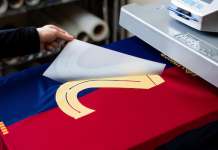Jaymes Kine, writing for Massivit 3D, asks what if technology could not only give us more time and convenience, but also help us express ourselves artistically in new and exciting ways? This is where the intersection between art and technology emerges. Every day an increasing number of artists make greater use of various technologies.
New technologies bring with them immense possibilities. Generally, these breakthroughs are directed at improving our lives in a real practical way. Technology can make us safe, more efficient, or, with increased automation, just give us more time to ponder the wonders of the world.
With the power of 3D printing now in the hands of many, and the advent of large format 3D printing, we may be witnessing an entirely new category of art.
Is creating art with 3D printing really art? By definition 3D printing, sometimes known as additive manufacturing, is the process of creating a three dimensional solid object of any shape from a digital model using various materials and methods. Certainly that creation can be purely for the purpose of art, however it is often used for fabricating items.
This much you likely already know, despite the fact that additive manufacturing is still considered a relatively new technology. Both 2D and 3D art, on the other hand, go back over 30,000 years. When Upper Paleolithic Europeans were setting out to express themselves back then with the most basic of technologies, they had no idea how much easier it would be so many years later.
Today’s artists don’t stick only to pencils, paper, water colours or easels. They don’t even suffice with clay or other sculpting materials – they leverage the technological revolution humanity is in. Now anyone can pick up an iPad and quickly bring to life what is in their head, without getting their hands dirty (or painted). Digital enhancements to drawings or paintings are commonplace, and digital photography is a world on its own.
With all of these modern tools already available, why would an artist reach for a seemingly industrial 3D printer to do their bidding? For one, the possibilities for 3D printing art are endless, as the tech has organically allied with an array of industries in the arts. Plus, the introduction of large format 3D printing has truly unlocked the potential for huge 3D printed art.
Large format 3D printing can play a key role, and already experimentation abounds in sculpture, installation, props and character design. In fact, there are many reasons why artists would implement 3D printing into practice.
The option of on-the-fly customisation is a major benefit of additive manufacturing. 3D printing offers an efficient, full-proof and flexible solution to custom design, and the benefits of such technology can be seen in films, games and set designs.
The replication process of 3D printing makes it a must-adopt tool for artists. Many types of art rely on replicated component parts in their making. This replication can not only be labour intensive and mundane but also prone to errors. 3D printing eliminates these humps which allows artists more room to unleash their creative energy.
If using a high-speed 3D printer, artists can expedite their entire creation process. This means producing a piece of art 30 times faster than most other methods. Plus, steps such as sketching are handled digitally, meaning mistakes can be corrected without squandering time (not to mention wasting materials).
3D printing also brings a breakthrough on size limitations. Parts can even be joined together, making the overall potential size unlimited. Artists are used to being restricted both in execution and design of their grand plans. Creating large art pieces, or pieces within an installation, can be very challenging in terms of the resources and time needed to craft a final product. Leveraging the digital process of 3D printing allows artists to create what is in their head much faster, all while sparing them much of the manual labour.
MASSIVIT
https://massivit3d.com















